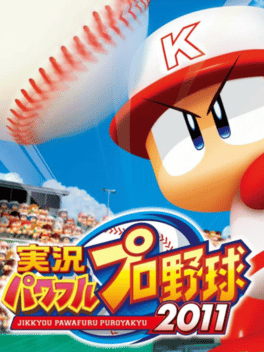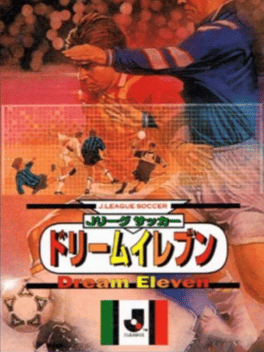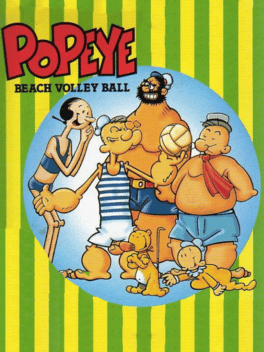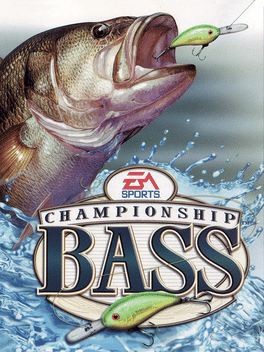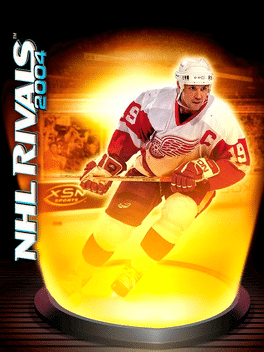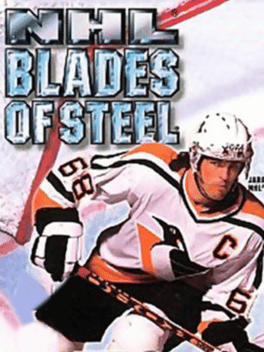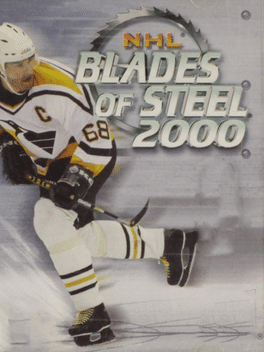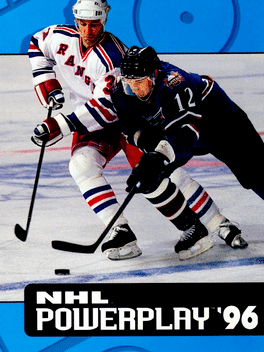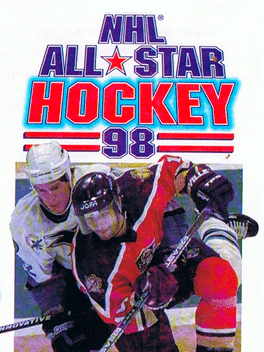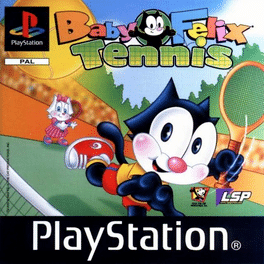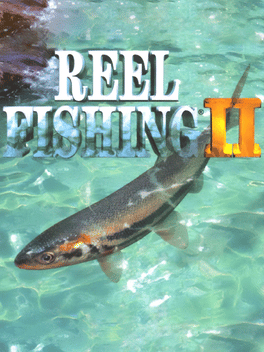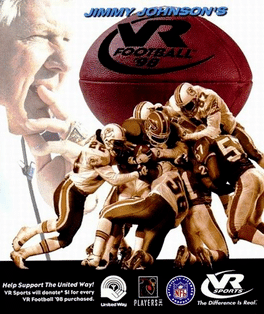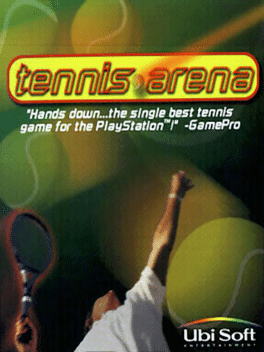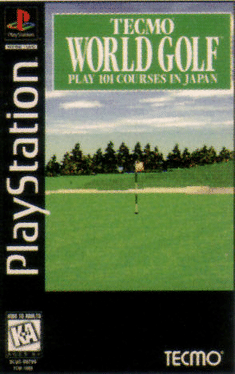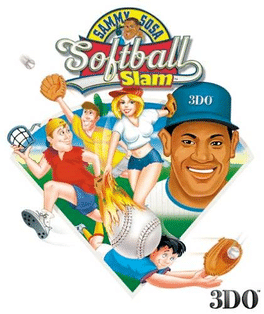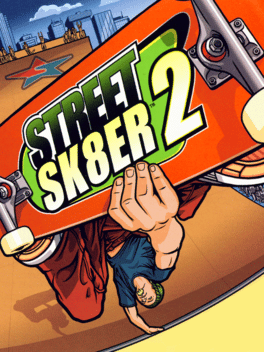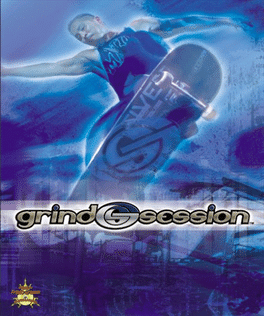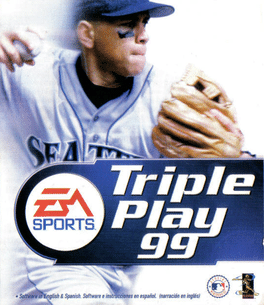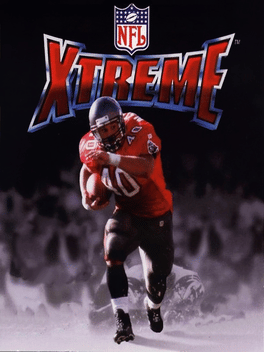Most Popular Mac Games - Page 246
-
J.League Soccer Dream Eleven
1995
J.League Soccer Dream Eleven is a football game for the Sega Game Gear. -
Popeye Beach Volleyball
1994
He's Popeye the Sailor, but he's not out at sea this time. Popeye and his friends have decided to take a break and enjoy the beach, but Brutus wants the attention of Olivia, and challenges Popeye to a game of Volleyball! -
Championship Bass
2000
Championship Bass
2000
Bass fishing reaches new level with Championship Bass! Artificial Intelligence creates the most realistic behavior in simulated bass ever. False strikes, swerves, return attacks, and short-strike lunges will keep you on the edge. Even if you do land a strike, watch these fish go for obstacles in order ot break your line! Multiple difficulty levels, plenty of tricks in your lure box, multiple game modes, multiple lakes, and more. Sit in a boat and go for the fish, or simulate a whole fishing trip. The choice is yours! -
NHL Rivals 2004
2003
NHL Rivals 2004
2003
NHL Rivals 2004 is the first NHL title for the Xbox, developed by MGS (Microsoft Game Studios), and the second title developed under the XSN Sports banner - the development team's first foray into hockey on console. At the time of its release, the visuals in this game were its major selling point, with each player's face mapped onto their model ingame. The game features a fully animated polygonal crowd, tons of motion-captured animations, NHL licensed players, teams and arenas. The look and feel of the game are much different than games like EA's NHL series. This was also the first hockey game on Xbox that let players play in online tournaments and leagues over Xbox Live and XSN Sports. Rosters were updated as the season went on via content downloads over Xbox Live, though were only available for a limited time. Rivals 2004 features the gameplay mode of 3-on-3 pond hockey. This pickup-game style of play is meant for those who prefer instant action, and it can also be played over Xbox Live. Players can connect an -
NHL Blades of Steel
1999
NHL Blades of Steel
1999
Strap on your skates and hit the ice with NHL BLADES OF STEEL. Play with or against all of the teams in the NHL in the Exhibition mode, where you can get your bearings and learn winning tactics. Then, put those tactics to the test in the Season mode and try to win the Stanley Cup. If you don't like the ups and downs of Season play, go straight to the Playoffs. And when your friends question your dominance in the rink, go after them in the Two-Player link cable option. If the game ends in a tie, you will have to try to win it all in a shootout. No matter what mode you play, you must win the fights because if you lose, you go to the box. However, you can use the Practice mode to work on your fighting skills as well as your shootout technique. Will you be able to handle the action of NHL BLADES OF STEEL? -
NHL Blades of Steel 2000
2000
Try to win Lord Stanley's Cup in NHL BLADES OF STEEL 2000. You can play with or against any NHL team and use the Exhibition mode to learn the controls and practice your skills. When you want to test your tactics, enter the race for the Stanley Cup in the Season mode. If getting through a Season is a bigger time investment than you want, just skip it and go straight to the Playoffs. When a friend challenges your domination of the rink, put him in his place with the link cable Two-Player mode. No matter what mode you play, you will have to win the game in a shootout if it's tied at the end of regulation. And if you get into a fight and lose, you will have to sit in the penalty box. Try to become the greatest hockey player in the world with NHL BLADES OF STEEL 2000. -
NHL Powerplay '96
1996
-
NHL All-Star Hockey '98
1997
NHL All-Star Hockey '98 is a Sega Saturn exclusive. It was commissioned by SEGA after Virgin decided not to make another incarnation of NHL Powerplay for the SAT. -
Baby Felix Tennis
2002
Baby Felix Tennis
2002
Felix The Cat is one of the oldest popular cartoon characters since 1919. Baby Felix was a kids animated television cartoon that ran in 2000 and featured infant character versions of Joe Oriolo's Felix television cartoon from the fifties. School has ended and summer vacation for Felix and his friends is going to be fun as they will be playing tennis. Players can choose to play as either Baby Felix, Kitty, or Tattoo, plus four others can be unlocked by achieving set challenges in-game. It is a standard tennis game with an angled view so that the opponent's court is smaller than the opposing player's and as the character approaches the net, the camera view slightly follows it. There is a training mode and a progressive Championship mode. On different court surfaces, the ball moves differently. There is a meter for the serve where hitting it at a different point will give it a spin. Two players can also go multiplayer head-to-head against each other. -
Reel Fishing II
2000
Reel Fishing II
2000
Players can start the game in Free mode and choose from three different fishing spots. The majority of the action is experienced in the Season mode, however, where you are challenged to maintain a fishing career. From the Aqua Lodge menu screen, you will be able to travel between three different rooms: your work desk, the fish tank room, and the stock corner. At your desk, you can read "Fish Find" magazine for more information on how to catch fish, or you can search through your lure and fly organizer (empty at the beginning of the game). If you catch some fish and decide to keep them, you have the option of placing them in one of the appropriate fish tanks. One is for salt water, one for fresh water and one for running water. Once you start fishing in the Season mode, you're able to choose between two fishing spots. When you catch a certain number of fish, you're allowed to go to more areas and gain levels. -
Jimmy Johnson's VR Football '98
1997
As Interplay's first PlayStation football game under the VR Sports label, Jimmy Johnson's VR Football '98 offers both NFL and NFLPA licenses for real teams and players. Choose from 30 NFL teams with rosters reflecting the 1997 season, five of the greatest teams from the '70s, five from the '80s, five from the '60s, or five All-Pro Teams from 1996 and 1997. You can also create up to four preseason teams (plus one season team) and stock them with up to forty created players! The game features a Practice Mode, Preseason (which is an exhibition game), New Season and a Play Editor, allowing you to create your own offensive plays and save them to memory card (up to 24 plays can be saved for each block of space). Season progress can be resumed through passwords or via memory card, which offers you a choice between a regular or advanced memory card season. Regular means you can trade and create players, but the trades will be automatic and the created players always appear on your team. The advanced option lets you p -
Tennis Arena
1997
Tennis Arena
1997
With no stat tweaking and no licenses, Tennis Arena is arcade-style tennis at its most fundamental. What you have here is single-match or tournament play for up to four players with wacky characters and a few different courts to play on. You can play an obese Chinese man, for example, and compete in a Roman coliseum whose clay surface seems to affect bounce marginally. That's about it for options though. No sim, Tennis Arena serves up roughly the same level of fun as Pong did 25 years ago, albeit now with prettier graphics and the occasional super smash. The game also features special shots, with visible trails, fighter-plane-like sound effects, and higher ball speed. These must be earned however. After successfully returning the ball over the net six consecutive times, a yellow star appears under the character. You may then attempt to use the special shot, which entails lining up with the ball just right - but a failed special shot doesn't erase the stored potential. -
Tecmo World Golf
1996
Tecmo World Golf
1996
Tecmo World Golf distinguishes itself from all previous console golf games by offering 101 (yes, that's 1-0-1) authentic Japanese courses to play on. Choose from four male or four female players, each differing in power and shot tendency, or customize your own character. You'll be able to edit the golfer's name, appearance, handicap (from one to forty) and shot tendency, which determines the ball's trajectory after contact is made. You can also adjust each club's maximum shot distance and the golfer's starting tee position to improve your performance out on the links. -
Sammy Sosa Softball Slam
2000
Sammy Sosa Softball Slam brings the ultra-popular game of softball to the PlayStation game console for the first time ever for an entirely new game experience! Step up to the plate for more fast-paced game play as you knock out doubles and triples. All this over-the-top action comes screaming at you through a non-stop barrage of instant camera cuts combined with sizzling special effects, side-splitting animations and a bombastic announcer guaranteed to keep you on your toes and wanting more! -
Street Sk8er 2
2000
Street Sk8er 2
2000
This is a skateboarding game very similar in gameplay to Tony Hawk's Pro Skater. You pick a skater and go through different skate parks, selecting either pro or amateur settings. You can also create your own skate park. Multiplayer competition is also provded, including 4 player serial play. Street Sk8er 2's sound track contains music from many well known bands such as Deftones, Ministry, and Static X. -
Grind Session
2000
Grind Session
2000
Grind Session translates the spirit and thrill of hard-core boarding into arcade-style action. Gamers compete in street and tournament competitions, flow on the halfpipe, and freestyle it for the covers of the big skating magazines. The game features eight unique 3-D arenas, such as Van's Triple Crown skate park, and includes hundreds of tricks, customizable gear, and instant replay modes with different camera angles. Play your friends in such multiplayer modes as versus, team play, competition, tech challenge, S-K-A-T-E, and endurance. Grind Session also boasts 10 different skaters with the moves of board stars Daewon Song, Willie Santos, Pigpen, John Cardiel, and Cara Beth Burside, among others. If you want to go your own way, create a skater from scratch. The game's soundtrack is blessed by such hard-core artists as Man or Astroman, Sonic Youth, Suicidal Tendencies, GZA, and DJ Shadow. -
Triple Play 99
1998
Triple Play 99
1998
This iteration of EA's baseball simulation adds 3D hardware support, a career mode, and a full-league draft. It features official Major League Baseball statistics and names of all teams and players from the 1998 season. Other modes include single-game exhibition, home run derby, play-off, tournament, season and manager. The new career mode allows you to play multiple seasons. Tournament mode allows you to create a custom tournament with up to eight teams. -
NFL Xtreme
1999
NFL Xtreme
1999
NFL Xtreme is a licensed NFL game with 30 official teams and stadiums. Loosely simulating American football, games are played on a five-on-five format and an arcade approach is taken, with complete disregard for the official rules. Quarterbacks can easily throw 90-yard passes, defenders have hard-hitting tackling moves, and attackers can use spin or turbo to evade opponents, or flip over them. Late hits and pass interference are no problem, and you can even taunt and trash talk. To promote aggressiveness, opponents, when properly injured, can be out for an entire season. The game modes includes exhibition matches, a regular season and play-offs. There are detailed statistics, and you can sign, release or even create new players to build your team. Highlights can be reviewed in the instant replay mode, and you can alter the weather type, difficulty level and player size in the options. -
NHL Open Ice: 2 on 2 Challenge
1995
NHL Open Ice is the NBA Jam for ice hockey, with a 2 on 2 arcade action featuring a full NHL license including actual team names and logos and 120 actual NHLPA players with reflective stats for the 1995-96 season. The game features power-ups that will aid the players along during a game including the "Hot Meter" which is filled with every score, body check and steals. Once the meter is full, the player will literally catch fire and their stats will max out for a brief period of time, allowing the player to score goals better, steal the puck more often, etc. There is five difficulty settings and adjustable options such as period time times and cheat options such as "Big Head" mode and multiplayer capabilities for either head-to-head action or co-op play. Chicago Blackhawks announcer, Pat Foley, lends his voice talents to the game for in-game commentary.
